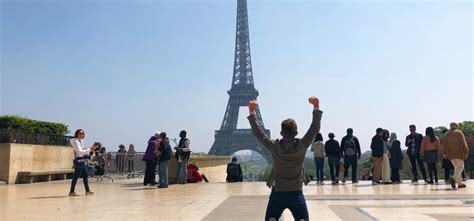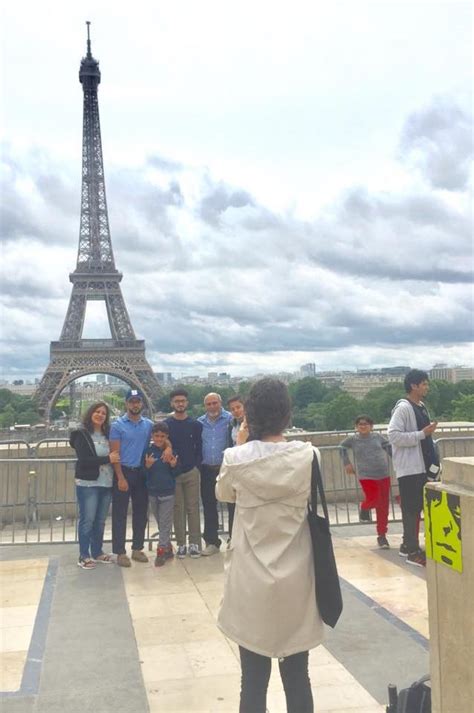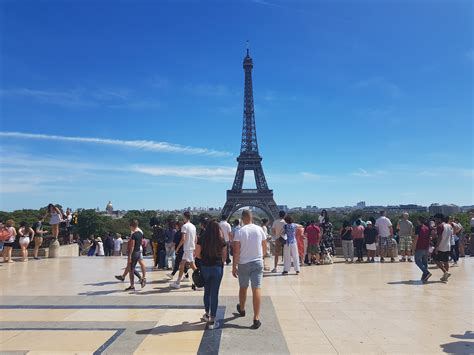Navigating New York City’s complex subway and bus systems can be a daunting task, even for seasoned locals. Fortunately, MTA route planners have emerged as essential tools for simplifying travel throughout the city. Whether you’re commuting to work, heading to a landmark, or simply exploring, having the right route planner can make your journey quicker and more efficient. In this ultimate guide, we’ll explore the best MTA route planners available, highlight their key features, compare free and paid options, and offer tips to ensure you’re getting the most out of these tools. Stay ahead of the curve by discovering future innovations that could change how you navigate NYC’s public transportation system.
Embark on a detailed exploration of this topic with elolok.net
1. Overview of MTA Route Planners
MTA route planners are digital tools designed to simplify navigating New York City’s complex public transportation system. These tools offer detailed trip planning, providing real-time updates on subway, bus, and train schedules. This allows users to choose the most efficient routes, whether traveling within Manhattan or to the outer boroughs. By providing alternative routes and up-to-date service alerts, MTA route planners help commuters avoid delays and travel seamlessly throughout the city.
Accessible through both mobile apps and web platforms, these planners provide interactive maps, real-time GPS tracking, and customizable options tailored to individual travel preferences. Integrating the MTA’s official transit data with intuitive interfaces, they enhance commute efficiency and minimize confusion, especially for those new to the city. From daily commuters to tourists, MTA route planners are an essential tool for smarter and more efficient travel.

2. Key Features to Look for in an MTA Route Planner
Choosing the right MTA route planner can significantly improve your travel experience. A crucial feature is real-time updates. Top-notch route planners offer live information on train and bus schedules, including any delays, service changes, or closures. This allows you to adapt your route on the fly and avoid unnecessary waiting.
A user-friendly interface is crucial. Whether it’s an app or a web-based planner, the design should be intuitive, with clear instructions, interactive maps, and straightforward route suggestions. GPS integration is also essential, enabling you to locate nearby stations or stops and providing step-by-step directions to your destination.
Moreover, the ability to create customized routes is a valuable feature. Effective planning tools enable users to personalize their journey by filtering options based on their preferences, such as minimizing transfers, prioritizing accessible stations, or choosing the fastest or least crowded routes. Further enhancing user experience are features like service alerts, notifications, and the option to save frequently used routes or preferred destinations.
Finally, multi-modal support proves advantageous for commuters who utilize a combination of subway, bus, and other transportation methods. Furthermore, some route planners incorporate bike-sharing programs and walking directions, guaranteeing the most efficient route from origin to destination. These features simplify and enhance the convenience of navigating New York City’s intricate transit system through MTA route planners.

3. Top-Rated MTA Route Planner Apps
Several top-rated MTA route planner apps offer reliable and efficient ways to navigate New York City’s public transportation system. One popular choice is Citymapper, renowned for its user-friendly interface and real-time updates. It seamlessly integrates subway, bus, ferry, and bike routes, and even provides walking and ride-share options, making it a comprehensive tool for navigating the city.
Transit App is another excellent option, highly praised by users. Its live tracking feature allows passengers to monitor buses and trains in real-time, providing immediate alternative routes in case of service interruptions. Furthermore, it encompasses a broad range of transportation options, including bike-sharing and ride-hailing services.
For those who prefer an official app, MYmta is the MTA’s own trip planner. It offers real-time data directly from the source, including service alerts, schedules, and accessibility information for each station. MYmta also provides updates on Long Island Rail Road (LIRR) and Metro-North services.
Lastly, Google Maps remains a solid option for travelers who want an all-in-one platform. In addition to mapping out public transit routes, it offers walking directions and integrates live traffic data for alternative transportation methods.
These apps not only enhance the efficiency of travel but also provide a range of features designed to meet individual commuting needs, guaranteeing a more seamless journey in New York City.

4. User Reviews and Ratings
User reviews and ratings are essential for assessing the performance of MTA route planner apps. Citymapper consistently earns high marks for its user-friendly interface and comprehensive route options. Users value its ability to seamlessly integrate subway, bus, and bike routes, highlighting its accuracy in providing real-time updates and ease of navigation for both residents and visitors. Citymapper frequently boasts an app store rating of 4.7 stars or higher.
Transit App is another highly-rated app, especially for its live tracking capabilities and quick alternative route suggestions during service disruptions. Commuters consistently give it a 4.6-star rating, praising its dependable performance and comprehensive coverage of transportation options.
MYmta garners mixed reviews, with many users praising its direct access to official MTA data. However, some users voice frustration with occasional bugs and interface problems. The app generally receives ratings between 3.8 and 4.0 stars.
While Google Maps is lauded for its versatility as a general-purpose tool, some users find its transit data less detailed than dedicated apps like Citymapper. Nonetheless, it consistently maintains a rating above 4.5 stars.
Each of these apps offers unique advantages, and user preference often hinges on their individual commuting requirements.
5. Comparing Free vs. Paid MTA Route Planners
Both free and paid MTA route planners offer useful features, but their differences might sway your choice based on your specific requirements. Free apps such as Citymapper, Transit App, and Google Maps provide fundamental services without charge, including real-time updates, live tracking, and integration with various modes of transportation. These apps are intuitive, reliable, and well-suited for most commuters who need basic navigation tools for New York City’s public transit network.
While the basic versions of these apps are free, certain paid versions or premium subscriptions, such as Citymapper’s premium features, offer additional benefits. These benefits may include offline maps for navigating without internet access, personalized routes tailored to your daily travel patterns, and expanded coverage that includes detailed information about less common transportation options. Premium users can also enjoy ad-free experiences, a significant advantage for those who frequently use these apps.
For those who need more in-depth planning tools, like constant service alerts or detailed alternate route suggestions during disruptions, a paid route planner could be worthwhile. However, for the average commuter, free apps typically offer more than enough functionality. Ultimately, the choice between free and paid depends on the frequency of use and the specific needs of the traveler—whether convenience and customization justify the extra cost.
6. Tips for Using MTA Route Planners Effectively
To maximize the effectiveness of MTA route planners, several practical tips can enhance your travel experience. Firstly, it is crucial to check for real-time updates before embarking on your journey. Many apps provide live data on delays, service changes, and other disruptions that might impact your route. This proactive approach can help you circumvent unexpected surprises and plan your trip accordingly.
Setting up notifications for your usual travel routes is also a great way to stay informed. Several apps enable alerts about service changes or disruptions for specific lines, which can save you both time and worry, particularly during busy periods like rush hour or weekends when schedules may be altered.
For journeys spanning multiple boroughs, consider exploring multi-modal transportation options. Apps like Citymapper offer comprehensive route planning, incorporating not only subways and buses but also bike-sharing, ferries, and walking routes. Utilizing these diverse modes can sometimes lead to quicker or more picturesque travel experiences.
To streamline your travel experience, the app allows you to save your favorite destinations and frequently used routes. This feature provides you with instant access to real-time information, eliminating the need to manually enter your destination each time.
Finally, if your app allows it, download offline maps. In areas with limited or no cellular service, such as underground stations, offline maps can be invaluable for uninterrupted navigation. These tactics can significantly improve your travel efficiency in NYC.
7. Future Developments in MTA Route Planning Technology
The future of MTA route planning is bright, fueled by the relentless march of technology. A key development is the integration of artificial intelligence (AI) and machine learning into route planners. These technologies can analyze colossal amounts of data to tailor route suggestions to individual preferences, behavior, and real-time conditions, enhancing the travel experience in New York City.
Furthermore, integrating augmented reality (AR) into mobile applications has the potential to transform how users navigate subway stations and bus stops. Envision utilizing your smartphone to receive visual directions superimposed on the real world, simplifying the process of locating the correct platform or transfer point.
Furthermore, the widespread adoption of contactless payment systems has the potential to simplify the boarding process and minimize delays. As mobile applications continue to develop, they may enable frictionless payments across diverse transit options, empowering users to manage their travel expenditures with greater efficiency.
Another anticipated advancement is the further integration of mobility as a service (MaaS), which would allow users to plan and pay for multiple forms of transportation within a single platform. This could include rideshares, bike rentals, and public transit, creating a holistic travel experience.
As these innovations emerge, they promise to make navigating New York City’s transit system even more efficient and user-friendly.
In conclusion, MTA route planners are invaluable tools for navigating New York City’s intricate public transportation system. By understanding the key features, exploring top-rated apps, and implementing effective usage tips, travelers can enhance their commuting experience. As technology continues to advance, future developments promise even more convenient and personalized transit solutions, making it easier for everyone to travel smarter and more efficiently throughout the city.
elolok.net